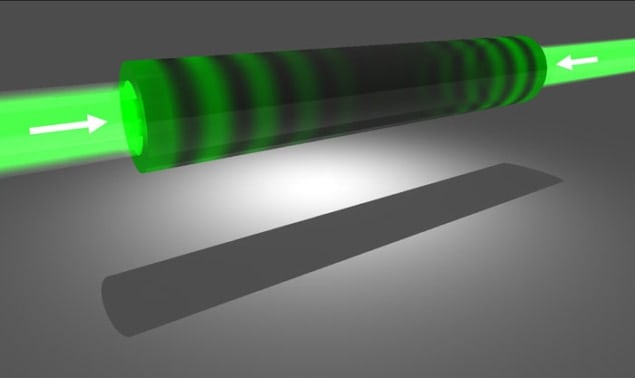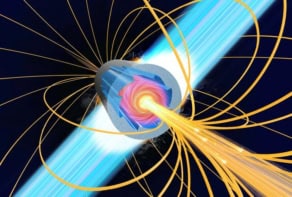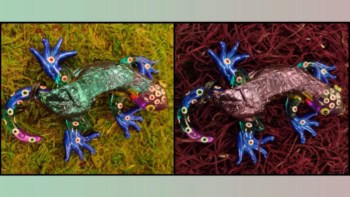
In a fascinating case of physics being turned on its head, a group of researchers at Yale University in the US has created an “anti-laser” that almost perfectly absorbs incoming beams of coherent light. The invention is based on a theoretical study reported last summer in which Douglas Stone and his Yale colleagues claimed that such a system could be possible in a device that they call a coherent perfect absorber (CPA). Instead of generating coherent light beams with a laser, the devices absorb incoming coherent light and convert it into either heat or electricity.
Now, having teamed up with experimental physicists at Yale, Stone has built a version of the device by creating an “interference trap” inside a silicon wafer. Two laser beams – originally split from a single beam – are directed onto opposite sides of the wafer and their wavelengths are fixed so that an interference pattern is established. In this way, the light waves get stalled indefinitely, bouncing back and forth within the wafer, with 99.4% of both beams being transformed into heat.
The group argues that there is no theoretical reason why 100% of the light could not be absorbed using the technique. The researchers are also confident that the current size of the device, 1 cm in diameter, can be reduced to just 6 µm. “It is surprising that the possibility of the ‘time-reversed’ process of laser emission has not been seriously discussed or studied previously,” says Stone.
Focus on applications
Stone’s group believes that its “anti-laser” could prove to have many exciting applications. These might include filters for laser-based sensors at terahertz frequencies for sniffing out biological agents or pollutants, which requires detecting a small backscattered laser signal against a large background of thermal noise.
Another idea is to use the device as a type of shield in medical applications to enable surgeons to fire laser beams at unwanted biological tissue, such as tumours, with greater accuracy. “With our technique an appropriately engineered incident set of light waves could penetrate deeply into such a medium and be absorbed only at the centre, enabling delivery of energy to a specified region,” explains Stone.
The group also speculates that by adding another “control” beam it could control the device to toggle between near complete absorption and 1% absorption. This property could enable the devices to function as optical switches, modulators and detectors in semiconductor integrated optical circuits.
One limitation of all such devices, however, is that they will only work at specific wavelengths, meaning that the technology will not be particularly useful in photovoltaic cells or cloaking devices.
The findings are reported today in Science.


